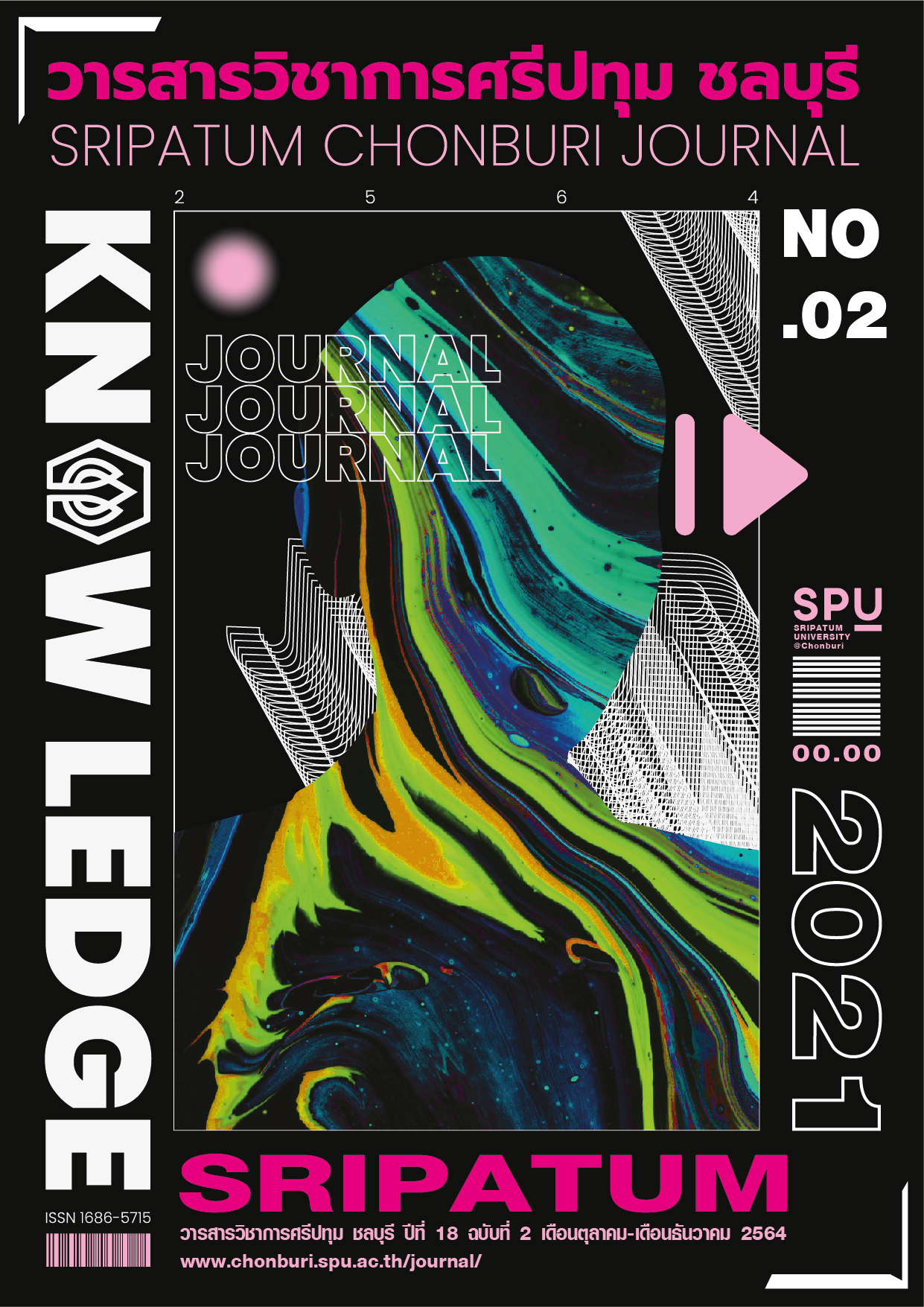A STUDY ON MOTIVATION OF SCHOOL REPRESENTATIVE TABLE TENNIS PLAYERS ATTENDING THE 44th SATITSAMAKKEE GAMES “PRASARNMIT GAME”
Keywords:
motivation, table tennis players, the 44th Satitsamakkee Games “Prasarnmit Game”Abstract
The purpose of this research study was to examine and compare motivation of table tennis players attending the 44th satitsamakkee games “prasarnmit game” as their school representatives. 244 table tennis players, consisting of 122 males and 102 females, participated in this event. There were 216 tennis players (122 males and 94 females) who responded and returned survey questionnaires. The instrument used for collecting data was the survey questionnaire. The reliability of the survey questionnaire was 0.93. It was found that the mean scores of intrinsic motivations of the tennis players both males and females were higher than those of extrinsic motivations of the tennis players both males and females. According to this result, it could be implied that the tennis players both males and females participated in this event because of their intrinsic motivations driving their interest in table tennis. In addition, when the mean scores were categorized based on grade levels, it was found that the high school table tennis players had different motivation from other grade levels. The extrinsic motivation which was “participating this event because of having chance to meet friends” had the highest mean scores on this group of players. Based on the results of this research, it could be concluded that all table tennis players who were school representatives always had motivations for responding to their desire. These motivations consisted of both intrinsic and extrinsic motivations. Both motivations supported these players to develop and change their lives in a better way. The motivation should begin with intrinsic motivations which were enjoying, having fun, and having self-worth when playing this sport. If these motivations are developed during their elementary school levels, these motivations will increase the interest of these players and motivate these players to continue improving their skills until they are in high school levels.
References
ชาญชัย อาจินสมาจาร. (2550). จิตวิทยาการเป็นโค้ชกีฬา. กรุงเทพฯ: ปัญญาชน.
ชูศรี วงศ์รัตนะ. (2550). เทคนิคการใช้สถิติเพื่อการวิจัย (พิมพ์ครั้งที่ 10). กรุงเทพฯ: ไทเนรมิตกิจ อินเตอร์ โปรเกรสซิฟ.
นุชลี อุปภัย. (2555). จิตวิทยาการศึกษา (พิมพ์ครั้งที่ 2). กรุงเทพฯ: จุฬาลงกรณ์มหาวิทยาลัย.
พิชิต เมืองนาโพธิ์. (2534). เอกสารประกอบการสอน จิตวิทยาการกีฬา. กรุงเทพฯ: คณะพลศึกษา มหาวิทยาลัยศรีนครินทรวิโรฒ.
มุกดา ศรียงค์. (2540). จิตวิทยาทั่วไป. กรุงเทพฯ: ภาควิชาจิตวิทยา คณะศึกษาศาสตร์ มหาวิทยาลัยรามคำแหง.
โรงพยาบาลพญาไท. (2563). เริ่มค้นหาตนเอง ทดลองสิ่งใหม่ ๆ นี่คือพัฒนาการในเด็กวัยรุ่นตอนกลางที่พ่อแม่ต้องเข้าใจ (ออนไลน์). เข้าถึงได้จาก:
https://www.phyathai.com/article_detail/2872/th/เริ่มค้นหาตนเอง_ทดลองสิ่งใหม่ๆ_นี่คือพัฒนาการในเด็กวัยรุ่นตอนกลางที่พ่อแม่ต้องเข้าใจ?branch=PYT2
[2563, 27 มีนาคม].
ลักขณา สริวัฒน์. (2557). จิตวิทยาสำหรับครู. กรุงเทพฯ: โอเอสพริ้นติ้งเฮ้าส์.
ศศิธร จ่างภากร และคณะ. (2560). นนทรีเกมส์ สาธิตสามัคคี ครั้งที่ 41. กรุงเทพฯ: สยามสปอร์ต ซินดิเคท.
สืบสาย บุญวีรบุตร. (2541). จิตวิทยาการกีฬา. ชลบุรี: โรงพิมพ์ชลบุรีการพิมพ์.
สืบสาย บุญวีรบุตร. (2546). เอกสารประกอบการอบรม โครงการพัฒนาและส่งเสริมสมรรถภาพทางด้านจิตใจให้นักกีฬาและผู้ฝึกสอน. กรุงเทพฯ: โอเดียนสโตร์.
สุปราณี ขวัญบุญจันทร์. (2539). เอกสารประกอบการสอนวิชา พล411 จิตวิทยาการกีฬา. กรุงเทพฯ: ภาควิชาพลศึกษา คณะพลศึกษา มหาวิทยาลัยศรีนครินทรวิโรฒ.
สุรางค์ โค้วตระกูล. (2559). จิตวิทยาการศึกษา. กรุงเทพฯ: จุฬาลงกรณ์มหาวิทยาลัย.
Downloads
Published
Issue
Section
License
บทความทุกบทความเป็นลิขสิทธิ์ของวารสารวิชาการศรีปทุม ชลบุรี



